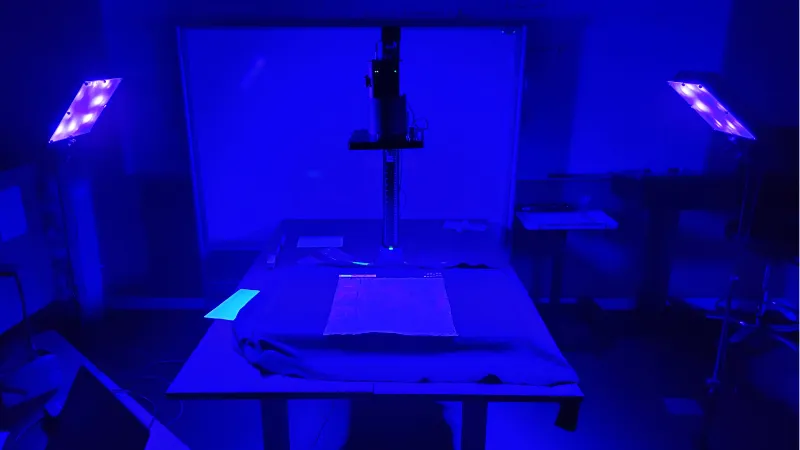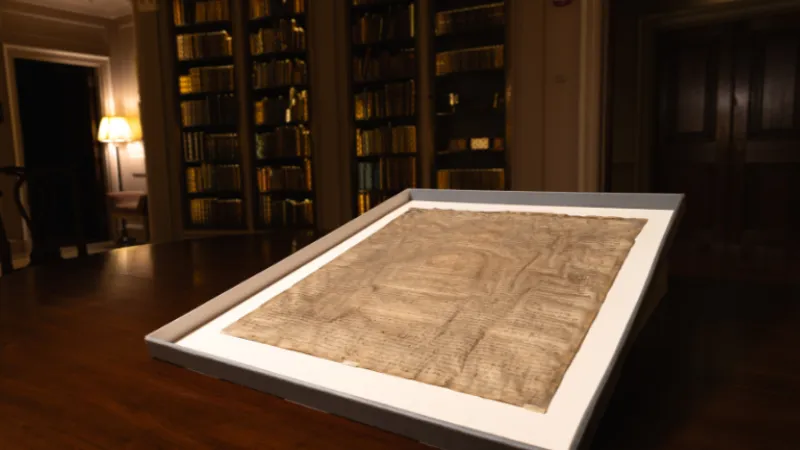Never did Professor David Carpenter think he would discover an original Magna Carta, but that is exactly what happened when he was conducting research for his new book on unofficial copies of the historic document.
The Professor of Medieval History was looking online at digitised images of statute books, which are unofficial collections of law and legislation made for lawyers and litigant, when he came across a single sheet of Magna Carta in Harvard Law School Library archives. It had some confusing online notes around its date and the suggestion it was a ‘copy’. Then, when he opened the image, he was astounded.
“I found I was looking, for all the world, at what seemed an original of King Edward I's 1300 confirmation of Magna Carta. This was the last time the full text of Magna Carta was set out in any royal confirmation and is thus, in a way, the last Magna Carta. I never thought, in my wildest dreams, that I would find an unknown Magna Carta. I was astonished.– Professor David Carpenter
 King Edward I
King Edward I
Considered a key document in the evolution of human rights against oppressive rulers, Magna Carta has formed the basis of constitutions around the world. It was influential in the founding of the United States, from the Declaration of Independence to the framing of the U.S. Constitution and the subsequent adoption of the Bill of Rights. In 2007, a 1297 original sold for many millions at auction.
Harvard bought their charter in 1946 for $27.50, as a “copy … somewhat rubbed and damp-stained”. It was being sold by a London bookdealer called Sweet & Maxwell who had bought it from an RAF war hero via Sotheby’s for £42 (roughly equivalent to £1,540 today).
Watch this short video about David's discovery and its significance.
The changing nature of historical research
David is a leading authority on the history of Britain in the central middle ages and wrote the Penguin Classics Magna Carta book in 2015. He teaches first year students in the Faculty of Arts and Humanities about historical skills and sources and plans to use the Harvard Magna Carta, known as HLS 172, as an example of how you can evaluate if a document is genuine. He said the fact he discovered a centuries-old document through looking at online archives reflects just how much his field of research has changed.
“Imaging and the internet have transformed historical research,” he said. “When I started research in the 1970s, there was nothing online and most of my unprinted primary sources were brought to me in the Round Room of the Public Record Office - now at the heart of our Maughan Library.”
“In order to research unofficial copies of Magna Carta at Harvard Law School, I would have had to go to Harvard and trawl through its numerous statute books. Now thanks to them putting images of their collection online, research can be done in days which would previously have taken weeks or months.”
 Imaging the Harvard Magna Carta
Imaging the Harvard Magna Carta
Verification
To help authenticate the document as an original from 1300, he turned to friend and fellow Magna Carta expert Professor Nick Vincent at the University of East Anglia, with whom he had set up the AHRC-funded Magna Carta project.
Over many months, they conducted painstaking work to assess the Harvard document. David began by collating the texts of the six previously known originals surviving from the 1300 confirmation. The document, which measures 489mm by 473mm, was also photographed by Harvard librarians under UV light and subjected to spectral imaging to establish its authenticity.
David found HLS 172, like the other originals had an elaborate 'E' of 'Edward' at the start and the elongated capitals in the first line.
 A close up image of the Harvard Magna Carta
A close up image of the Harvard Magna Carta
“Another remarkable fact, hitherto unnoticed, emerged," David said. "I found the text of Magna Carta which was being confirmed in 1300 differed in a whole series of small ways from previous versions. Importantly, these changes were made across the board, so were found in all the originals, which meant a new master text had been prepared, with the clerks being given strict instructions to stick to it.
“This then posed a high bar for HLS 172. If its text differed from that found in the other originals, it was almost certainly not genuine. With some anxiety, therefore, I worked through HLS 172 comparing its text word for word with that found in the six originals. Although in places damaged and faded, with the help of the enhanced and spectral imaging it was possible to do this.
“HLS 172 passed its exam with flying colours. Its text matched up exactly with that found in the other originals. Together with the hand and general appearance, this convinced me that Harvard Law School does indeed possess an original of the 1300 Magna Carta.”
From Cumbria to the USA
David and Nick also traced the document’s provenance and concluded it could be a lost Magna Carta once issued to the former parliamentary constituency of Appleby in Westmorland, in modern-day Cumbria. Their detective work revealed that Sweet & Maxwell had purchased the manuscript in 1945 from First World War flying ace Air Vice-Marshal Forster ‘Sammy’ Maynard CB. It emerged Forster Maynard was related to Thomas Clarkson, a staunch campaigner against the slave trade.
Given the significance of the document to anti-slavery campaigners at the time, they believe this could explain how it found its way to Maynard centuries later and eventually to Harvard Law School. And there it lay in the library archives for decades until its true identity and significance was revealed.
Harvard’s Magna Carta deserves celebration, not as some mere copy, stained and faded, but as an original of one of the most significant documents in world constitutional history, a corner stone of freedoms past, present and yet to be won”.– Professor David Carpenter
 A full picture of the Harvard Magna Carta
A full picture of the Harvard Magna Carta